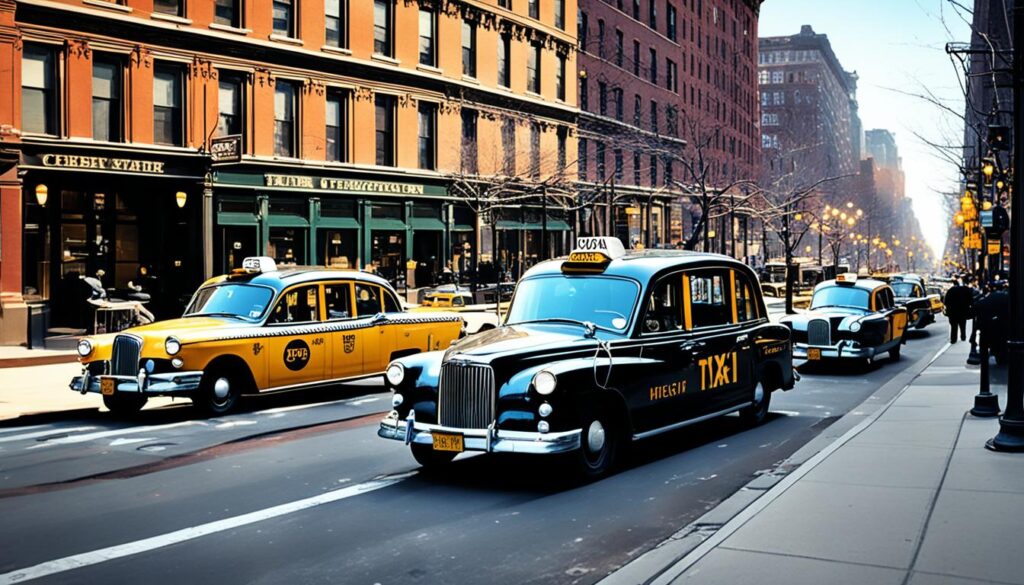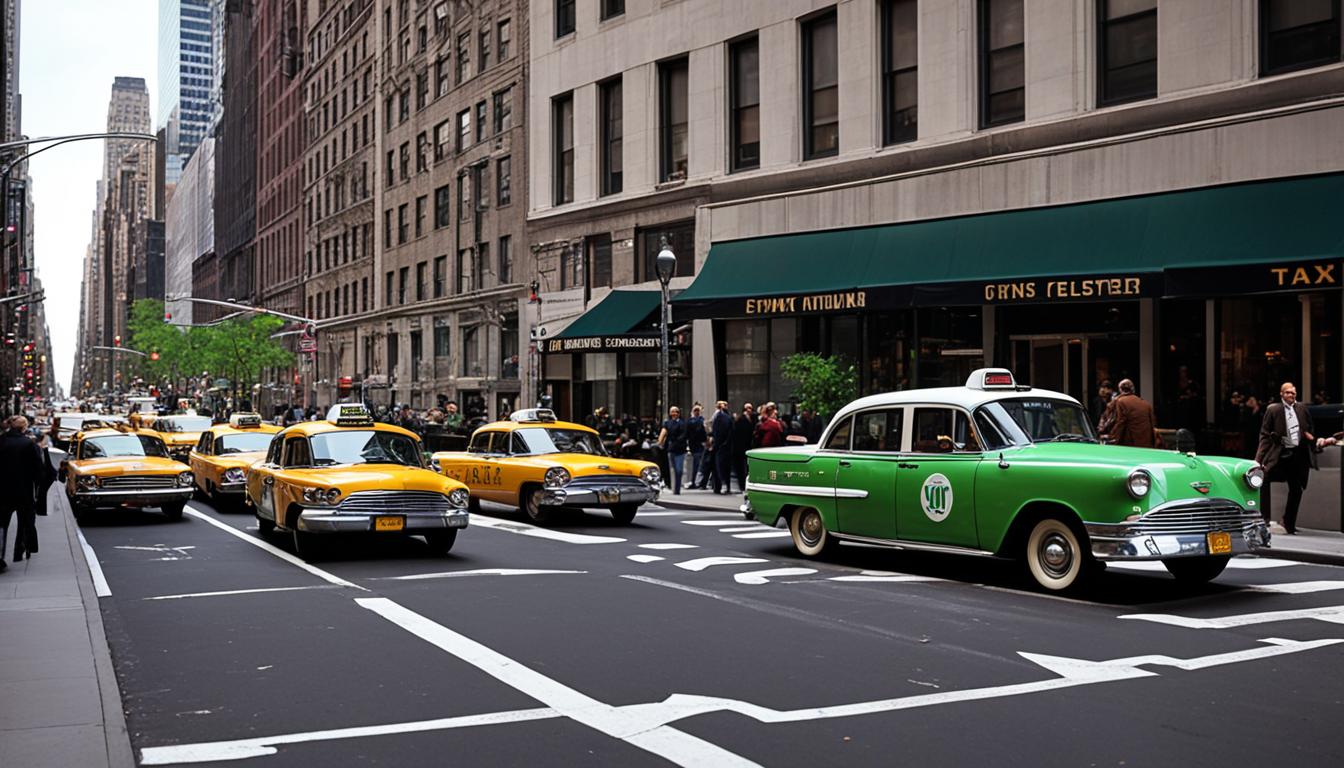In 1897, NYC’s electric taxis changed the way we move around the city. These zero-emission cabs started a new era of sustainable transportation. They were a solution to the “horse problem,” where horses left behind a lot of waste every day.
Henry Morris and Pedro Salom from Philadelphia made the Electrobat. This electric vehicle became New York’s first motorized taxi. These taxis could go 15 miles per hour and run 25 miles on one charge. They were perfect for city driving.
The Electric Wagon & Carriage Company was started by Morris and Salom. They offered these vehicles for lease, which was a new idea. This quickly made them popular with the wealthy and set the stage for today’s taxi services.
Key Takeaways
- NYC’s electric taxis debuted in 1897
- Electrobats were the first zero-emission cabs in New York
- These vehicles could travel 25 miles on a single charge
- Electric taxis helped address the city’s “horse problem”
- The Electric Wagon & Carriage Company pioneered a leasing model
- Eco-friendly taxis gained popularity among the upper class
The Rise of NYC’s Electric Taxis in the Late 19th Century
New York City’s electric taxi fleet grew fast in the late 1800s. By 1899, over 100 Battery-Powered Vehicles were on the streets, up from just 12 in 1897. The Electrobat was a hit, loved for its quick start and quiet drive. It was great for making the city’s air cleaner.

Morris and Salom led the charge with their battery-swapping system. They turned a former roller skating rink into a hub for electric cars. Swapping batteries took only three minutes, as quick as changing horses or filling up with gas today.
But these electric taxis faced some hurdles. Their speed and quietness led to the first speeding ticket and a pedestrian death. These incidents showed the need for new safety rules for electric cars. New tech often brings surprises, as we’ve seen in many areas.
The growth of electric taxis in NYC was a big step towards cleaner transport. It showed how Electric Vehicle Infrastructure could make cities cleaner and change how we move around.
The Electric Vehicle Company: Expansion and Challenges
The Electric Vehicle Company aimed to change transportation in the late 19th century. It came from combining electric street railways and battery makers. They wanted a nationwide electric network, which was early thinking on climate change mitigation.
The company grew fast, adding taxi services in Philadelphia, Chicago, and Boston, besides New York. It became the top car maker in America, leading the clean energy shift. But, its success was brief.
Then, a fire destroyed many of their taxis. The Panic of 1907 made things worse, ending electric taxis in New York City. As the Electric Vehicle Company failed, gasoline-powered cabs took over. Harry Allen started a new service that quickly grew to 700 vehicles, ending electric taxis’ time.

Leave a Reply